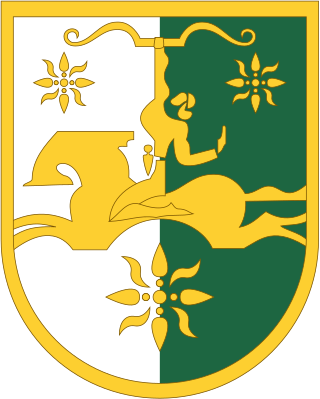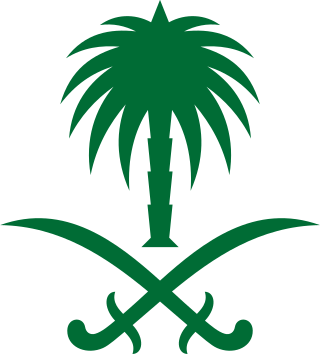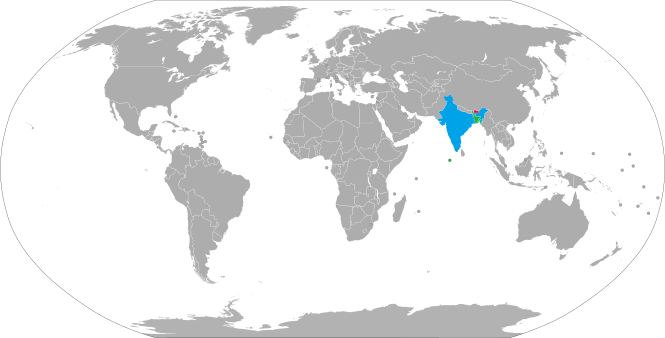Transport in Bhutan uses about 8,000 kilometres (5,000 mi) of roads and four airports, three of which are operational and interconnected. Paro Airport is the only airport which accommodates international flights. As part of Bhutan's infrastructure modernization programs, its road system has been under development since the 1960s. There are no railways, and as Bhutan is a landlocked country with no major waterways, there are no ports.

Tourism in India is 4.6% of the country's gross domestic product (GDP). Unlike other sectors, tourism is not a priority sector for the Government of India. Forbes magazine ranked India as the 7th most beautiful country in 'The 50 Most Beautiful Countries In The World' rankings. The World Travel and Tourism Council calculated that tourism generated ₹13.2 lakh crore (US$170 billion) or 5.8% of India's GDP and supported 32.1 million jobs in 2021. Even though, these numbers were lower than the pre-pandemic figures; the country's economy witnessed a significant growth in 2021 after the massive downturn during 2020. The sector is predicted to grow at an annual rate of 7.8% to ₹33.8 lakh crore (US$420 billion) by 2031. India has established itself as the 5th largest global travel healthcare destination with an estimated market size of around $9 billion in 2019, out of the total global travel healthcare industry of $44.8 billion(2019). In 2014, 184,298 foreign patients travelled to India to seek medical treatment.

A visa is a conditional authorization granted by a polity to a foreigner that allows them to enter, remain within, or leave its territory. Visas typically include limits on the duration of the foreigner's stay, areas within the country they may enter, the dates they may enter, the number of permitted visits, or if the individual can work in the country in question. Visas are associated with the request for permission to enter a territory and thus are, in most countries, distinct from actual formal permission for an alien to enter and remain in the country. In each instance, a visa is subject to entry permission by an immigration official at the time of actual entry and can be revoked at any time. Visa evidence most commonly takes the form of a sticker endorsed in the applicant's passport or other travel document but may also exist electronically. Some countries no longer issue physical visa evidence, instead recording details only in immigration databases.

Tourism in Bhutan began in 1974, when the Government of Bhutan, in an effort to raise revenue and to promote Bhutanese unique culture and traditions to the outside world, opened its isolated country to foreigners. In 1974 a total of 287 tourists visited the Kingdom of Bhutan. The number of tourists visiting Bhutan increased to 2,850 in 1992, and rose dramatically to 7,158 in 1999. By the late 1980s tourism contributed over US$2 million in annual revenue.

Bhutanese nationality law is the law governing the acquisition, transmission and loss of Bhutanese citizenship. The Bhutanese Citizenship Act of 1985 was introduced by the Druk Gyalpo Jigme Singye Wangchuck, on June 10, 1985, modifying the definition of a Bhutanese citizen. The Act was implemented as part of a new national policy of Driglam Namzha, national customs and etiquette. Because of its emphasis on Bhutanese culture, the Act is also referred to as the "One Nation, One People Act." The 1985 Act was amended by the Immigration Act of 2007 and then superseded in 2008 by the Constitution of Bhutan insofar as previous laws are inconsistent; where not inconsistent, the provisions of the 2007 Act, the 1985 Act, and previous Acts relating to immigration continue in effect.

Visitors to Armenia must obtain a visa from one of the Armenian diplomatic missions unless they are citizens of one of the visa-exempt countries, or citizens who may obtain a visa on arrival, or citizens eligible for an e-Visa. Citizens of the Commonwealth of Independent States and citizens of all Eurasian Economic Union and European Union member states may enter Armenia without a visa.

Visitors to Mongolia must obtain a visa from one of the Mongolian diplomatic missions unless they are citizens of one of the visa-exempt countries, or citizens who may obtain a visa on arrival, or citizens eligible for an e-Visa.

Visitors to Bolivia must obtain either a visa from one of the Bolivian diplomatic missions or an Online Visa unless they are citizens of one of the visa-exempt countries or citizens who may obtain a visa on arrival.
Visitors to Sri Lanka must obtain a visa, either on arrival to Sri Lanka or in advance, unless they are a citizen of one of the visa-exempt countries. Most visitors entering for tourism purposes are required to obtain an electronic visa (e-Visa) or a visa on arrival, unless they are exempt from obtaining one. However, citizens of some countries must obtain a visa in advance instead of an e-Visa before being allowed to enter Sri Lanka. All visitors must hold a passport valid for 6 months.

Visitors to India must obtain a visa unless they come from one of the visa-exempt countries. Nationals of certain countries may obtain a visa on arrival or an e-Visa online, while others must obtain a visa from an Indian diplomatic mission.

Visitors to Iran must obtain an e-Visa unless they are citizens of one of the visa-exempt countries or citizens who must obtain a visa from one of the Iranian diplomatic missions.

Visitors to Pakistan typically must obtain a visa from one of the Pakistani diplomatic missions. Pakistani missions abroad offer various categories of visas, with some travelers eligible for visa on arrival if traveling as part of a group tour, or for business.

The visa policy of Nepal allows citizens of most countries to obtain either an Online tourist visa or an visa on arrival while citizens of India are allowed freedom of movement. However, citizens of certain other countries must obtain a visa from one of the Nepalese diplomatic missions.

Papua New Guinea Visitors must obtain a visa on arrival or e-Visa to enter the country. Visitors can also apply for a visa from the PNG diplomatic missions. All visitors must have a passport valid for 6 months.
Visitors to Qatar must obtain a visa, unless if they are citizens of one of the GCC countries or if they are citizens of one of the countries eligible for a visa waiver on arrival.

Visitors to the Republic of Abkhazia must obtain an entry permit unless they are citizens of one of the visa-exempt countries. All visitors must have a passport valid for at least 6 months.

Visitors to Saudi Arabia must obtain a visa, unless they come from one of the visa exempt countries.

Visitors to the Democratic Republic of the Congo must obtain a visa from one of the Democratic Republic of the Congo diplomatic missions unless they are citizens of visa-exempt countries, citizens who can obtain a visa on arrival or citizens eligible to obtain an e-Visa.

Any foreign national who wishes to enter Myanmar must obtain a visa unless they are a citizen of one of the designated visa-exempt countries.

Visitors to Egypt must obtain a visa from one of the Egyptian diplomatic missions unless they come from one of the visa exempt countries or countries that are eligible for visa on arrival.




















